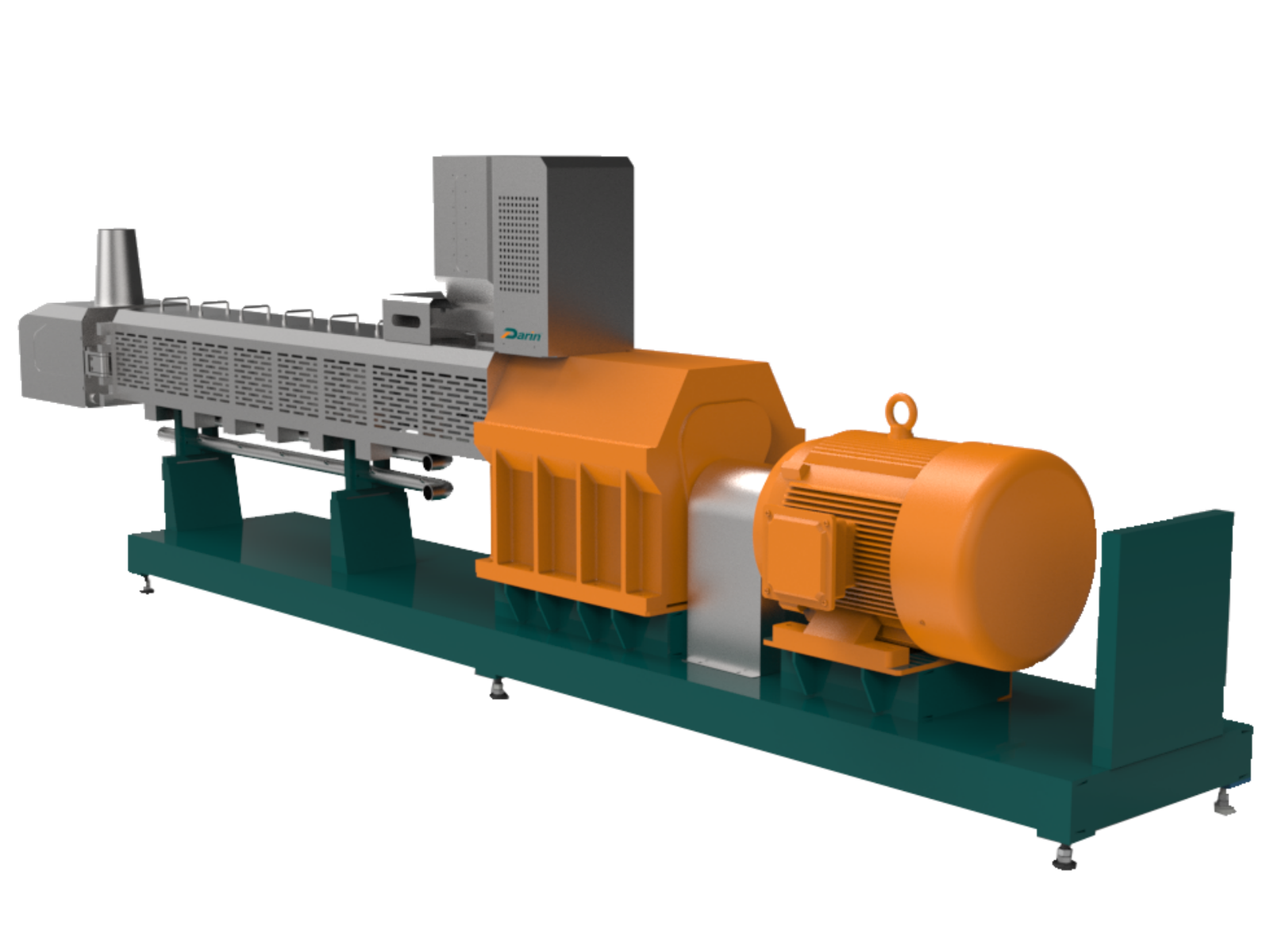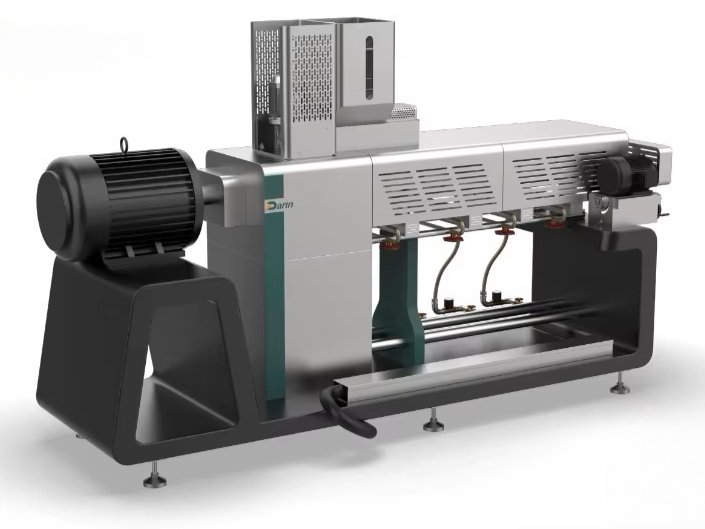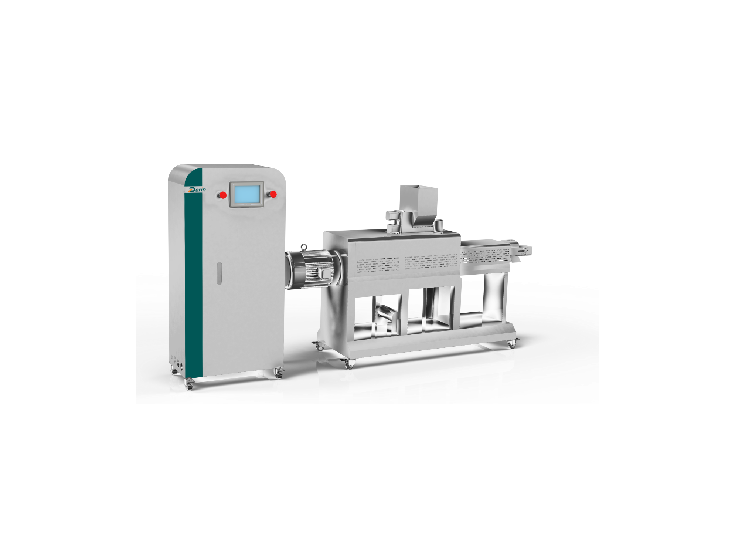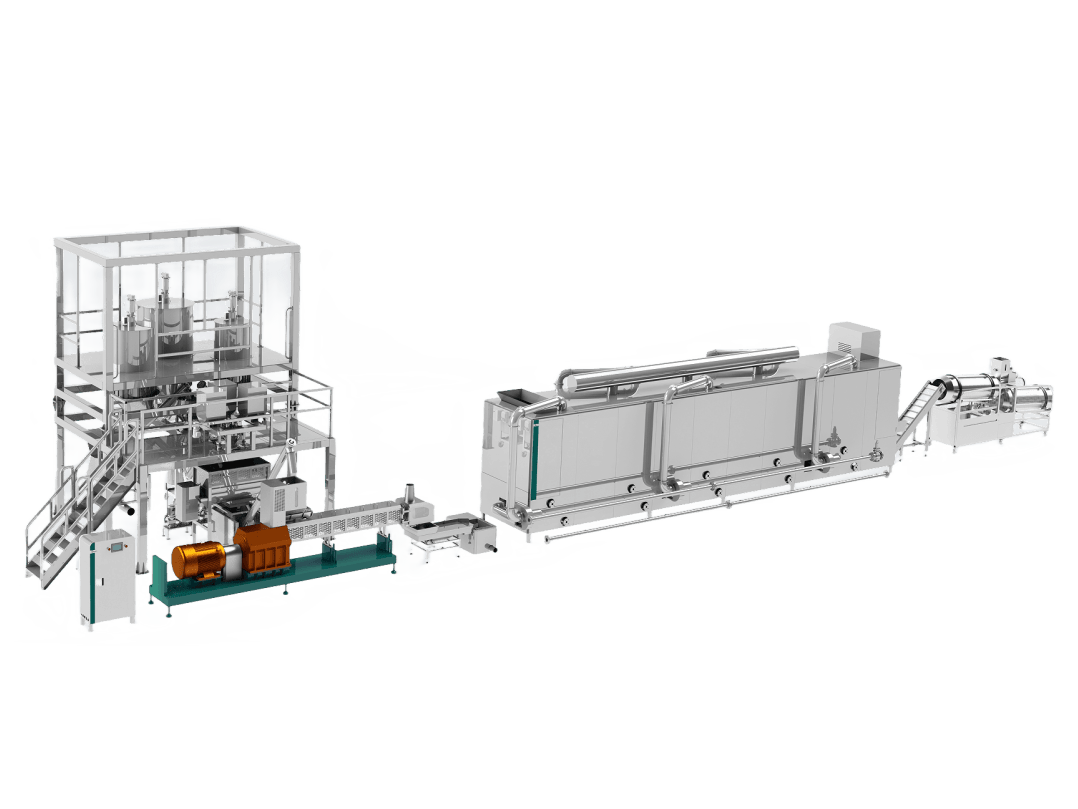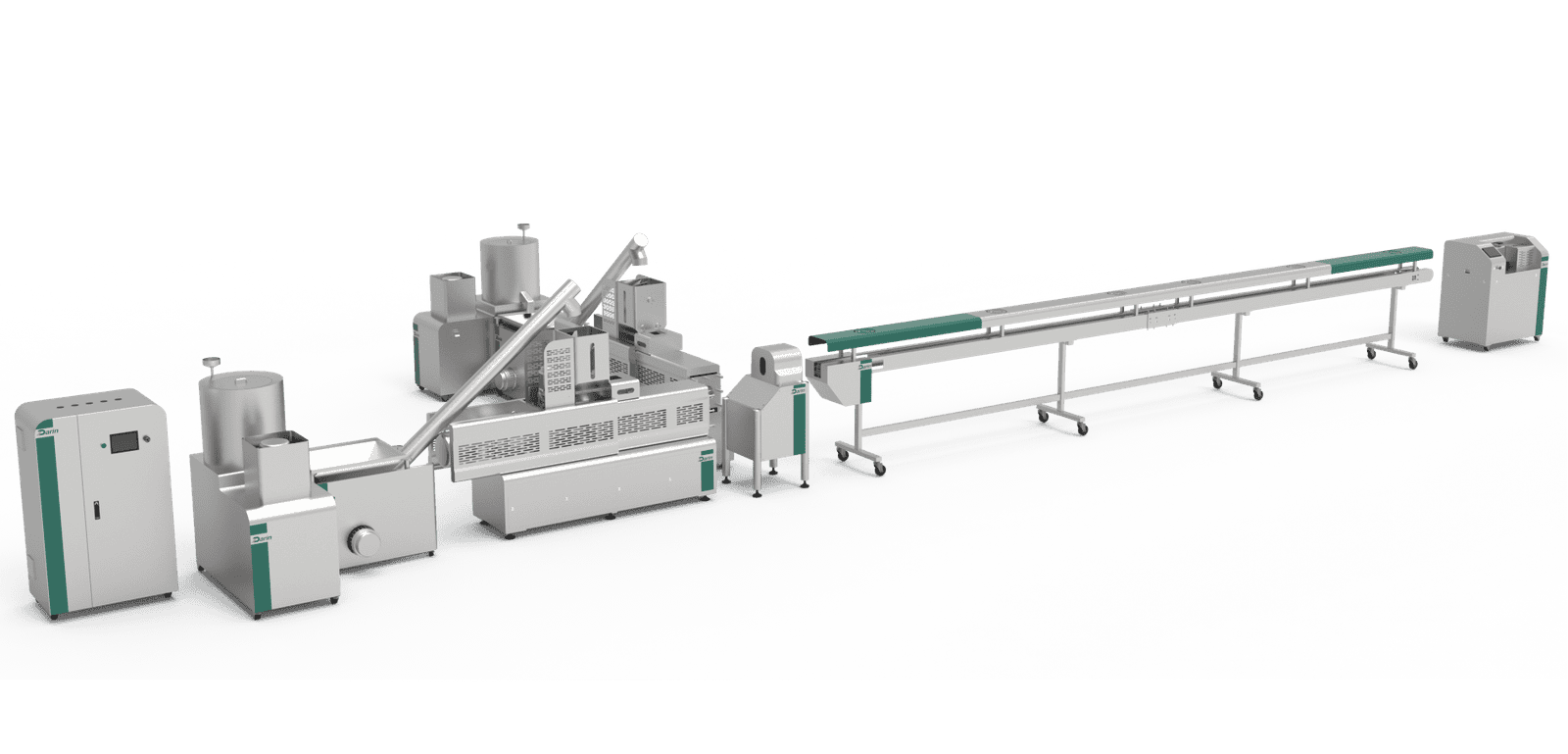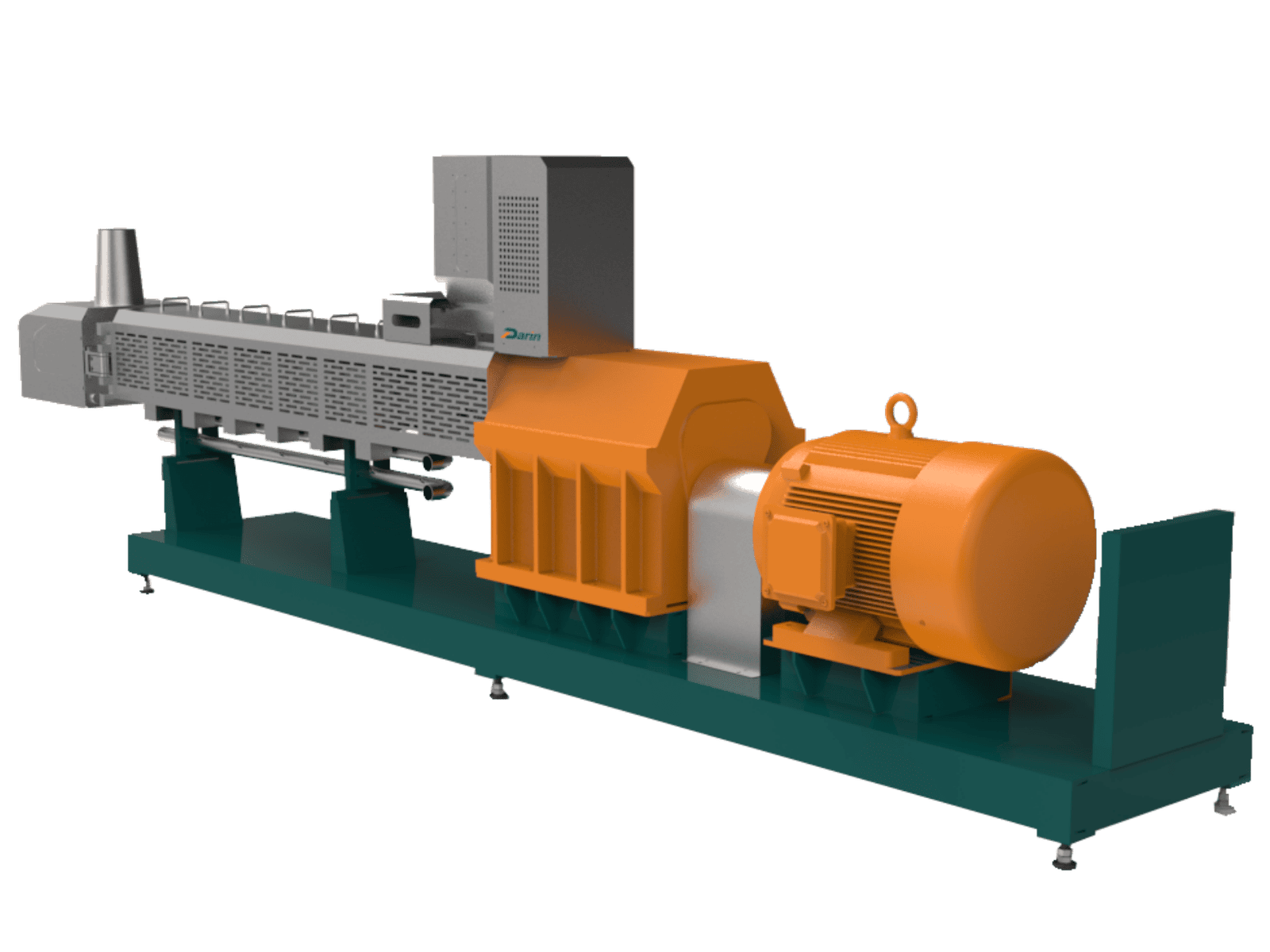
In industries like pet food, plastics, and pharmaceuticals, conventional processing methods often struggle with mixing complexity, ingredient variability, and throughput demands. Traditional single-screw extruders, while sufficient for basic tasks, may not provide the intensive mixing, flexibility, or throughput needed for modern high-performance materials. This is where twin-screw extruders become invaluable—designed to solve these bottlenecks and enhance control, efficiency, and processing performance across a wide range of applications.
Twin-screw extruders are high-performance industrial machines that use two intermeshing or co-rotating screws inside a barrel to mix, convey, and process materials with superior efficiency, precision, and flexibility compared to single-screw extruders. They are ideal for applications requiring intensive mixing, multiple ingredient feeding, controlled residence time, and consistent product quality.
If your production demands complex recipes, tight tolerances, and consistent output across multiple formulations, understanding twin-screw extruders is critical for optimizing process efficiency and product quality.
\
Twin-screw extruders are only used for plastics.False
Twin-screw extruders are widely used across industries including food processing, pharmaceuticals, chemicals, and pet food production due to their flexibility and superior mixing capabilities.
Twin-Screw Extruder Overview
Twin-screw extruders feature two screws rotating inside a closed barrel. These screws can rotate:
- Co-rotating (same direction): Common for mixing and compounding.
- Counter-rotating (opposite direction): Often used for more intensive shearing or pressure.
The screws may intermesh (touch and overlap) or non-intermesh depending on the application. Intermeshing co-rotating screws are the most common in food and pet food industries due to their continuous self-cleaning and better dispersion control.
Key Functional Capabilities:
| Function | Description |
|---|---|
| Feeding | Accommodates multiple solid and liquid feeders for flexible recipes |
| Conveying | Controlled material movement through screw elements |
| Melting | Uniform melting of ingredients via heat and shear |
| Mixing | Efficient distributive and dispersive mixing for complex formulations |
| Degassing | Vents enable moisture/volatiles to escape mid-process |
| Forming/Extruding | Final shaping through customized dies (e.g., pet treats, plastic strands, pharma granules) |
Comparison with Single-Screw Extruders
| Feature | Twin-Screw Extruder | Single-Screw Extruder |
|---|---|---|
| Mixing Intensity | High (customizable) | Low |
| Flexibility | Very high (modular) | Moderate |
| Feeding Capability | Multiple feeders simultaneously | Usually single feeder |
| Energy Efficiency | Higher for complex tasks | Higher for simple tasks |
| Residence Time Control | Excellent | Moderate |
| Cleaning Time | Moderate (depends on modularity) | Fast |
| Cost | Higher | Lower |
Technical Features of Twin-Screw Extruders
| Specification | Typical Range |
|---|---|
| Screw Diameter | 25 mm – 180 mm |
| L/D Ratio (Length/Diameter) | 28:1 – 60:1 |
| Screw Speed | 100 – 900 rpm |
| Throughput | 20 kg/h to 3,000+ kg/h |
| Heating Zones | 4 to 12 (precise control) |
| Motor Power | 11 kW to 300 kW |
Key Advantages
| Advantage | Explanation |
|---|---|
| Superior Mixing | Custom screw designs ensure effective blending of multiple ingredients, including fibers, fats, and additives. |
| High Flexibility | Easily adjustable for new products or recipes by changing screw elements or feeder setup. |
| Consistent Product Quality | Minimizes batch variation, enabling uniform color, texture, and density. |
| Continuous Operation | Ideal for 24/7 industrial lines with minimal supervision. |
| Modular Design | Users can reconfigure barrels, screws, and feeding ports based on new processes. |
| Efficient Degassing | Allows controlled removal of steam, moisture, and volatiles—especially useful in starch- or protein-based pet food. |
Industry Applications of Twin-Screw Extruders
| Industry | Application | Description |
|---|---|---|
| Pet Food | Dry kibble, functional snacks, dental chews | Formulated with protein, starch, and additives for controlled digestibility and shape |
| Plastic Compounding | Filled plastics, masterbatches, fiber-reinforced blends | Uniform dispersion of additives and fillers |
| Pharmaceuticals | Drug granulation, controlled release forms | Precise temperature and residence time critical for drug integrity |
| Food Industry | Cereal, snacks, textured protein (TVP) | High-protein or gluten-free formulations, customized textures |
| Chemical Processing | Reactive extrusion, degassing | Controlled chemical reactions in barrel under high pressure and temperature |
Example: Darin® Twin-Screw Pet Food Extruder
- Screw Diameter: 65mm or 95mm
- L/D Ratio: 40:1 for optimized starch gelatinization
- Throughput: Up to 1,000 kg/h
- Application: Complete pet food production including extrusion, cutting, drying, and flavor coating
Schematic: Internal Zones of a Twin-Screw Extruder
| Zone | Function | Adjustable? |
|---|---|---|
| Feeding Zone | Ingredient intake | Yes (multiple ports) |
| Compression Zone | Melting and pressurization | Yes (barrel temp, screw profile) |
| Mixing Zone | Homogenization and texturing | Yes (element type and sequence) |
| Degassing Zone | Volatile/moisture removal | Yes (vacuum/venting system) |
| Metering Zone | Flow control to die | Yes (screw pitch and speed) |
Limitations to Consider
- Higher Capital Investment: More expensive than single-screw systems.
- Operator Training: Requires skilled technicians to configure screw elements and process parameters.
- Longer Changeover Time: For product or recipe changes, especially with cleaning and reassembly.
Summary
Twin-screw extruders are multi-functional, precision-controlled systems designed for advanced processing of complex, sensitive, or highly variable materials. With their modular screw configurations, multi-zone temperature control, and high mixing efficiency, they have become indispensable in modern pet food, plastic, and pharmaceutical production. Their ability to handle high moisture, fat, or filler content with consistent performance makes them a top choice for demanding applications.
Looking for Advanced Twin-Screw Extrusion Solutions?
Darin Machinery offers customizable twin-screw extrusion systems tailored for pet food, snacks, and nutritional products. With CE and ISO certifications, industry-proven designs, and global after-sales service, we help you scale production with confidence and consistency.
📞 Contact us today to learn more or request a technical consultation and quote!
5. FAQ
Q1: What is a twin-screw extruder and how does it work?
A1: A twin-screw extruder is a processing machine featuring two intermeshing screws rotating inside a barrel. These screws either co-rotate or counter-rotate to transport, shear, mix, and shape material through controlled pressure and temperature. It's widely used in industries like plastics, food processing, pharmaceuticals, and chemicals to process raw material into consistent, high-quality final products.
Q2: What are the advantages of twin-screw over single-screw extruders?
A2: Twin-screw extruders offer superior mixing, better temperature control, more uniform product output, and enhanced processing of heat-sensitive or reactive materials. Unlike single-screw models, twin-screw machines handle higher throughput and allow flexible formulation adjustments, making them ideal for complex processing tasks.
Q3: In which industries are twin-screw extruders commonly used?
A3: Twin-screw extruders are widely used in plastic compounding, food extrusion (e.g., snacks, cereals, pet food), pharmaceutical manufacturing (e.g., drug delivery systems), chemical blending, and even recycling. Their ability to handle diverse materials and consistent product quality makes them a staple in high-precision industries.
Q4: What are the differences between co-rotating and counter-rotating twin-screw extruders?
A4: Co-rotating twin-screw extruders have screws rotating in the same direction and are known for high-speed mixing, better dispersive action, and throughput. Counter-rotating models rotate in opposite directions, offering more controlled processing, lower shear, and are better suited for heat-sensitive materials and PVC extrusion.
Q5: How do I choose the right twin-screw extruder for my application?
A5: Selection depends on factors like material type, desired throughput, processing temperature, torque requirements, and final product application. Co-rotating extruders are ideal for compounding and food processing, while counter-rotating machines suit applications requiring minimal shear. Consulting with manufacturers for customization based on your process goals is highly recommended.
6. References
- Twin-Screw Extruders Explained – https://www.sciencedirect.com/topics/engineering/twin-screw-extruder – ScienceDirect
- What Is Twin-Screw Extrusion? – https://www.extrusionworld.com/twin-screw-extrusion-guide – Extrusion World
- Twin-Screw Extruder Advantages – https://www.thermofisher.com/twin-screw-extruder-benefits – Thermo Fisher Scientific
- Food Extrusion Technology – https://www.researchgate.net/publication/303887927_Food_Extrusion – ResearchGate
- Twin-Screw Extruders in Pharma – https://www.pharmtech.com/view/twin-screw-extrusion-drug-delivery – Pharmaceutical Technology
- Co-rotating vs Counter-rotating Screws – https://www.xtrutech.com/blog/counter-rotating-vs-co-rotating-screws – Xtrutech
- Selecting an Extruder – https://www.polymerprocessing.com/extruder-selection-guide – Polymer Processing
- Twin-Screw Compounding – https://www.coperion.com/en/products-solutions/extruders/ – Coperion
- Plastic Extrusion Processes – https://www.ptonline.com/kc/plastic-extrusion – Plastics Technology
- High Torque Extruders – https://www.leistritz.com/en/extruders/ – Leistritz


